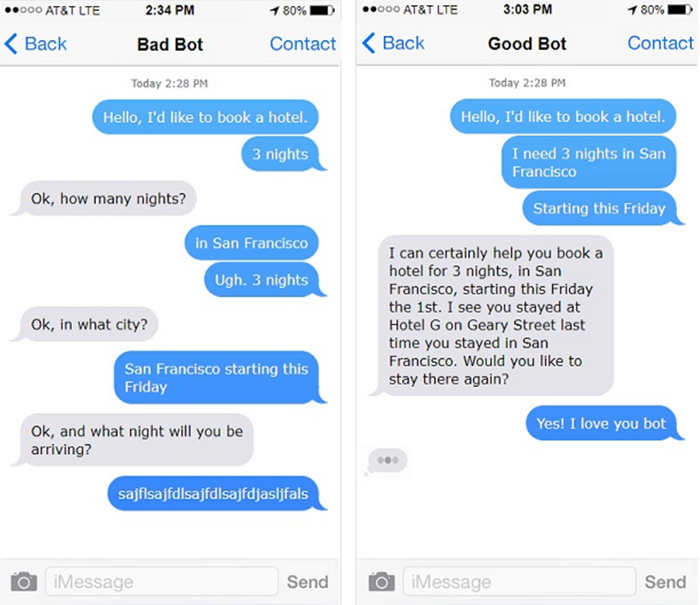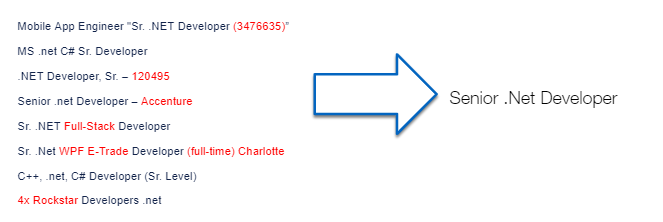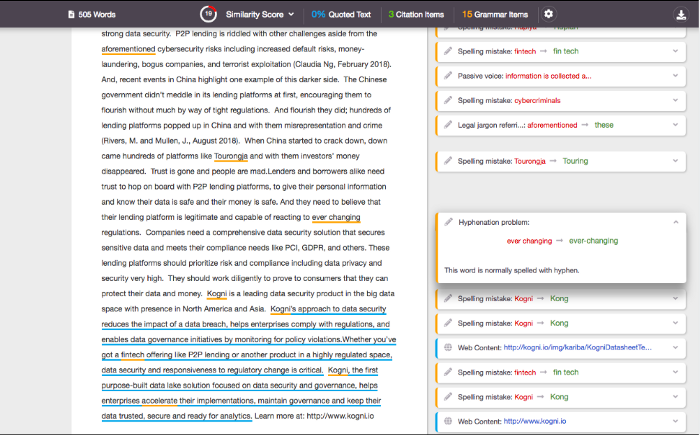The blog discusses the role of Natural Language Processing (NLP) in chatbots, an overview of what the future holds for NLP and Clairvoyant’s NLP solutions.
The struggle to press ‘1’ for billing and ‘2’ for account information is one that most of us are familiar with. Historically, machines have struggled with understanding human language, spoken or written. Recent advances made in Natural Language Processing (NLP) have eased this situation. NLP presents a way to convert natural human languages into rigid and formal inputs for a machine to understand. It is an aspect of Artificial Intelligence (AI), that helps computers understand, interpret, and utilize human languages. Using NLP, machines are now able to hear human speech, interpret it and respond in human languages. The AI-based NLP system communicates with humans using two forms of output — speech and written text.
NLP is made of two components — Natural Language Understanding (NLU) and Natural Language Generation (NLG):
-
NLU enables machines to understand human commands and speech.
-
NLG involves mapping relevant information from the knowledge source. It then helps the machine form meaningful sentences and set the tonality of the sentence to communicate it back to humans.
Role of NLP in Chatbots-
Chatbots have changed the way businesses are run today. Backed by NLP, they have evolved from providing simple and quick responses to having a full-fledged conversation with customers. NLP helps chatbots understand, interpret and act on human language inputs. It also plays a huge role in automating tasks in a business. Chatbots not only use the language inputs to answer a customer’s question but also try to understand the intent behind the conversation. They are trained to streamline various business-specific default responses against queries to further customer experience.
However, not all chatbots require NLP. If your chatbot does not receive too many customer queries and is employed to serve other purposes, you might not need NLP. It is crucial to understand the intent of a chatbot before building one. If your business is centered around communicating with your customers (e.g. call center), an NLP-enabled conversational chatbot can do wonders to improve response rates and boost the overall quality of the interactions. Such chatbots built around the right data feed will help your business make a notable impact online.
Without NLP, a chatbot might find it hard to distinguish between a customer’s ‘Hi’ and ‘Hey there’’. Such a chatbot will consider either input as a mere text-based input. NLP helps the chatbot understand and interpret such inputs so that Artificial Intelligence (AI) can give out a suitable response. For example, if you send a ‘Hi’, the NLP-enabled chatbot immediately interprets the input as a greeting, and harnesses the power of AI to send back an appropriate response, which in this case is a ‘Hi’ or a ‘Hello’.

A poorly constructed chatbot assisting with travel bookings
Above is an example of a poorly architected chatbot that is intended to assist customers with travel bookings. It tries to respond to each line that the user sends without allowing them to finish their query. A well-trained chatbot would allow the user to finish their query before asking further questions or sending an appropriate response. This would keep the conversation flowing, mimicking the way humans interact during everyday chats.
Into the future
Although NLP may still seem difficult to implement, the technology has already found its applications in various streams. With tools and techniques bringing success within reach, NLP has become more accessible. AI-based NLP systems can come in handy to reduce human intervention in routine tasks that are not too complex. To put it simply, this technology can be tasked with work that is simple and repetitive in nature.
Future virtual assistants may ‘skim through your calendar and plan your next day by interacting with other electronic devices while you are fast asleep’. Today, an NLP-based system can be trained to fetch a list of errors when a user asks ‘What is wrong with my system?’ While tomorrow’s NLP may better answer the question by also providing measures to fix the user’s system. This way, tomorrow’s evolved NLP-based systems can understand the true intent behind a customer’s query and provide complex solutions to improve the quality of the conversation.
Clairvoyant NLP solutions:
Use Case 1- Job Title Normalization
Clairvoyant ideated an AI-based, NLP-driven model that takes a systematic approach to normalize job titles and clean up redundant and duplicate data from the client’s database.

As shown in the above example, the various job titles listed on the left ultimately equate to the one on the right. It is crucial to reduce the variety on the left and eliminate the redundancy to bring down the noise in the database. By piecing this model together, Clairvoyant was able to reduce the variety in job titles and decrease the noise present in the data.
Use case 2- Plagiarism and Grammar Checker tool
Clairvoyant combined NLP and Machine Learning to create a classifier capable of predicting the likelihood of finding text on the web that matches a given segment of text. This approach allows the system to focus its resources on analyzing the highest-value text in a document. The classifier as also configurable, so administrators can tailor the sensitivity to the importance of the task in a variety of settings.

The use cases of NLP discussed above present an opportunity for the academia and the recruitment industry to seal the technology gaps in their respective sectors to deliver better results.
Get in touch with us for a comprehensive, data-centric NLP solution at sales@clairvoyantsoft.com or call us at (623)282–2385. We empower several sectors across an extensive range of NLP use cases and AI solutions.